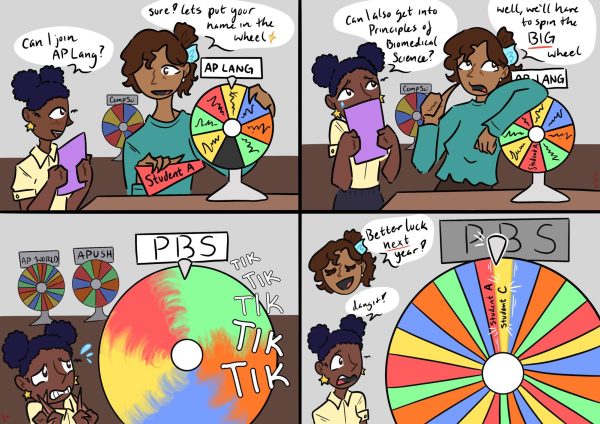UC schools gamble with state over limited funding
The months of March through May are the most anxious months in the lives of high school seniors.
These months are characterized by checking emails and logging onto school portals daily in the hope of finding that they get accepted to college.
For Cal High students, the California State University (CSU) and University of California (UC) school systems are home to the most popular choices, including UC Berkeley, Cal Poly, and UC Santa Cruz.
But this process is not always a joyous one for seniors. Many do not get accepted to the colleges they wished or expected to get accepted to, and wonder on what basis the decision was made to reject them.
“That guy got in?”
That is the thought that goes through the heads of so many anxious California seniors as they begin to hear back on their applications to the UC system.
As the Facebook, Twitter, and Instagram feeds of students everywhere are filled with celebratory pictures and posts, all of them saying, “So excited to be attending (Insert school name here)! Go (Insert school mascot here)! #(Location of school)bound,” they wonder why some people got in where and others didn’t.
For others who didn’t get into the UCs they thought they’d get into, more tweets like this are prevalent: “What was the point of even trying in school ?!?!?! ”
So when rejected students are feeling bad about themselves, they want to turn to the one thing that will make them feel even worse: the official UC admissions rate and statistics.
Well, I hate to break it to you, but you’ll have to wait a while, to the point where it won’t matter, to get those stats.
According to The Daily Californian (the less cool Californian), the UCs have decided to delay the release of this year’s admission rates until at least early June.
This is due to ongoing budget negotiations between the UC President Janet Napolitano and California Governor Jerry Brown, making the level of funding the UCs will receive uncertain.
This uncertainty of funding is what could skew the preliminary admissions data.
This reasoning is doubtful.
Without certain funding, keeping the data from officially being released is, in a way, protecting the UC system from public criticism.
The reason UCs aren’t releasing admissions data is because the data would generate strong public backlash in regards to the budget battle between Brown and Napolitano.
Brown wants to keep a flat tuition rate while Napolitano and the UC Board of Regents approved possible tuition hikes in November 2014. The tuition hike announcement alone sparked protest from students on all UC campuses.
The other issue is wait-lists. With more and more students from all over the world applying to the UCs for the same number of spots every year, more and more qualified students are being put on wait-lists, anxiously waiting to see if they are accepted to the UC of their dreams.
Now, wait-listed students are being used as bargaining chips in Napolitano’s battle for funding for the system.
UCs are trying to accept as many students as possible from the wait-list to get more funding and, in return, charge students more for tuition.
With funding running low in California and more students applying to UCs every year, admissions rates for in state students are especially low. This is because in-state students have a lower tuition, which means less money for the schools. If more out-of-state students are excepted, the more money the UCs are generating.
This is wrong. The main goal of the UC system should be to provide an affordable, all-around college education to CALIFORNIA students.
By increasing tuition and admitting more and more out-of-state students every year, the UCs are starting to make an enemy out of themselves, and would obviously not want to release their twisted admissions statistics.


